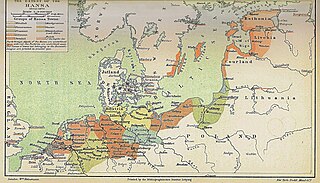
Back Middelnederduits Afrikaans الألمانية الدنيا الوسطى Arabic Среднодолнонемски език Bulgarian Mitjà baix alemany Catalan Middelnedertysk Danish Mittelniederdeutsche Sprache German Mezmalaltgermana lingvo Esperanto Bajo alemán medio Spanish Moyen bas allemand French Midnederdútsk Frisian
| Middle Low German | |
|---|---|
| Sassisch, Dǖdisch, Nedderlendisch, Ôstersch | |
| sassesche sprâke (or unnormalised sassche sprake), nedderlendische sprâke (or unnormalised nederlendesche sprake; since the 16th century)[1] | |
| Region | Northern Central Europe, viz. Northern Germany (roughly the Northern lowlands), Northeastern Netherlands, Northwestern/North-central (modern) Poland, modern Kaliningrad Oblast, also sporadically in Denmark, Sweden, Norway, Latvia, Estonia (confined to cities) |
| Era | 13th to 16th centuries; evolved into Modern Low German; gradually superseded as an official language by High German and (in the far West) Dutch |
Indo-European
| |
Early form | |
| Dialects |
|
| Latin (Fraktur) | |
| Language codes | |
| ISO 639-3 | gml |
| Glottolog | midd1318 |
| Linguasphere | 52-ACB-ca[2] |
 Northern Europe in 1400, showing the extent of the Hanseatic League | |



Middle Low German (Low German: Middelsassisk, Middelsassisch, Middelnedderdüüsch or Middelneaderdüütsk, German: Mittelniederdeutsch, Dutch: Middelnederduits) is a developmental stage of Low German. It developed from the Old Saxon language in the Middle Ages and has been documented in writing since about 1225/34 (Sachsenspiegel). During the Hanseatic period (from about 1300 to about 1600), Middle Low German was the leading written language in the north of Central Europe and served as a lingua franca in the northern half of Europe. It was used parallel to medieval Latin also for purposes of diplomacy and for deeds.[3]
- ^ Lasch, Agathe (1914). Mittelniederdeutsche Grammatik. Halle/Saale: Niemeyer. p. 5.
- ^ "m" (PDF). The Linguasphere Register. p. 219. Archived from the original (PDF) on 27 August 2014. Retrieved 1 March 2013.
- ^ Cordes, Gerhard; Möhn, Dieter (1983). Handbuch zur niederdeutschen Sprach- und Literaturwissenschaft. Erich Schmidt Verlag. p. 119. ISBN 3-503-01645-7.
© MMXXIII Rich X Search. We shall prevail. All rights reserved. Rich X Search